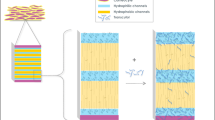Abstract
Chemical penetration enhancers (CPEs) are frequently incorporated into transdermal delivery systems (TDSs) to improve drug delivery and to reduce the required drug load in formulations. However, the minimum detectable effect of formulation changes to CPE-containing TDSs using in vitro permeation tests (IVPT), a widely used method to characterize permeation of topically applied drug products, remains unclear. The objective of the current exploratory study was to investigate the sensitivity of IVPT in assessing permeation changes with CPE concentration modifications and subsequently the feasibility of IVPT’s use for support of quality control related to relative CPE concentration variation in a given formulation. A series of drug-in-adhesive (DIA) fentanyl TDSs with different amounts of CPEs were prepared, and IVPT studies utilizing porcine and human skin were performed. Although IVPT could discern TDSs with different amounts of CPE by significant differences in flux profiles, maximum flux (Jmax) values, and total permeation amounts, the magnitudes of the CPE increment needed to see such significant differences were very high (43–300%) indicating that IVPT may have limitations in detecting small changes in CPE amounts in some TDSs. Possible reasons for such limitations include formulation polymer and/or other excipients, type of CPE, variability associated with IVPT, skin type used, and disrupted stratum corneum (SC) barrier effects caused by CPEs.







Similar content being viewed by others
Abbreviations
- API:
-
Active pharmaceutical ingredient
- CPE:
-
Chemical penetration enhancer
- DPG:
-
Dipropylene glycol
- FDA:
-
Food and Drug Administration
- HPLC:
-
High-performance liquid chromatography
- IPM:
-
Isopropyl myristate
- IVPT:
-
In vitro permeation test
- J max :
-
Maximum flux
- LLOQ:
-
Lower limit of quantification
- OA:
-
Oleic acid
- OLA:
-
Oleyl alcohol
- PIB:
-
Polyisobutylene
- PSA:
-
Pressure-sensitive adhesive
- SC:
-
Stratum corneum
- TDS:
-
Transdermal delivery system
- TEWL:
-
Transepidermal water loss
References
Williams AC, Barry BW. Penetration enhancers. Adv Drug Deliv Rev. 2012;64:128–37.
Dragicevic N, Atkinson JP, Maibach HI. Chemical penetration enhancers: classification and mode of action. In: Dragicevic N, Maibach HI, editors. Percutaneous penetration enhancers chemical methods in penetration enhancement. Berlin: Springer; 2015. p. 11–27.
Karande P, Mitragotri S. Enhancement of transdermal drug delivery via synergistic action of chemicals. Biochim Biophys Acta. 2009;1788:2362–73.
Lopes LB, Garcia MT, Bentley MV. Chemical penetration enhancers. Ther Deliv. 2015;6:1053–61.
Karande P, Jain A, Ergun K, Kispersky V, Mitragotri S. Design principles of chemical penetration enhancers for transdermal drug delivery. Proc Natl Acad Sci U S A. 2005;102:4688–93.
U.S. Food and Drug Administration. Guidance for industry—residual drug in transdermal and related drug delivery systems. 2011 pp. 1–6.
Shin SH, Ghosh P, Newman B, Hammell DC, Raney SG, Hassan HE, et al. On the road to development of an in vitro permeation test (IVPT) model to compare heat effects on transdermal delivery systems: exploratory studies with nicotine and fentanyl. Pharm Res. 2017;34:1817–30.
Banerjee S, Chattopadhyay P, Ghosh A, Datta P, Veer V. Aspect of adhesives in transdermal drug delivery systems. Int J Adhes Adhes. 2014;50:70–84.
Mehdizadeh A, Ghahremani MH, Rouini MR, Toliyat T. Effects of pressure sensitive adhesives and chemical permeation enhancers on the permeability of fentanyl through excised rat skin. Acta Pharma. 2006;56:219–29.
Eichner A, Stahlberg S, Sonnenberger S, Lange S, Dobner B, Ostermann A, et al. Influence of the penetration enhancer isopropyl myristate on stratum corneum lipid model membranes revealed by neutron diffraction and (2)H NMR experiments. Biochim Biophys Acta. 1859;2017:745–55.
Caussin J, Gooris GS, Janssens M, Bouwstra JA. Lipid organization in human and porcine stratum corneum differs widely, while lipid mixtures with porcine ceramides model human stratum corneum lipid organization very closely. Biochim Biophys Acta. 2008;1778:1472–82.
Femenía-Font A, Balaguer-Fernández C, Merino V, López-Castellano A. Combination strategies for enhancing transdermal absorption of sumatriptan through skin. Int J Pharm. 2006;323:125–30.
Bartek MJ, Labudde JA, Maibach HI. Skin permeability in vivo: comparison in rat, rabbit, pig and man. J Investig Dermatol. 1972;58:114–23.
Jung EC, Maibach HI. Animal models for percutaneous absorption. In: Topical drug bioavailability, bioequivalence, and penetration. New York: Springer; 2015. p. 21–40.
Akomeah FK, Martin GP, Brown MB. Variability in human skin permeability in vitro: comparing penetrants with different physicochemical properties. J Pharm Sci. 2007;96:824–34.
Raney SG, Franz TJ, Lehman PA, Lionberger R, Chen ML. Pharmacokinetics-based approaches for bioequivalence evaluation of topical dermatological drug products. Clin Pharmacokinet. 2015;54:1095–106.
Lehman PA, Franz TJ. Assessing topical bioavailability and bioequivalence: a comparison of the in vitro permeation test and the vasoconstrictor assay. Pharm Res. 2014;31:3529–37.
Acknowledgements
We thank Dr. Nihar Shah for his valuable guidance in TDS formulations. We also thank 3M for providing various samples of release liners and backings, Henkel Corporation and Dow Corning for providing PSAs, and Croda Inc. for providing various chemical penetration enhancer samples.
Funding
Funding for this project was made possible, in part, by the Food and Drug Administration through grant 5U01FD004275-05 (Subaward NIPTE-U01-MD-2016-003-001).
The views expressed in this paper do not reflect the official policies of the Department of Health and Human Services; nor does any mention of trade names, commercial practices, or organization imply endorsement by the United States Government.
Author information
Authors and Affiliations
Corresponding author
Additional information
Guest Editors: Ajaz S. Hussain, Kenneth Morris, and Vadim J. Gurvich
Rights and permissions
About this article
Cite this article
Shin, S.H., Srivilai, J., Ibrahim, S.A. et al. The Sensitivity of In Vitro Permeation Tests to Chemical Penetration Enhancer Concentration Changes in Fentanyl Transdermal Delivery Systems. AAPS PharmSciTech 19, 2778–2786 (2018). https://doi.org/10.1208/s12249-018-1130-0
Received:
Accepted:
Published:
Issue Date:
DOI: https://doi.org/10.1208/s12249-018-1130-0




